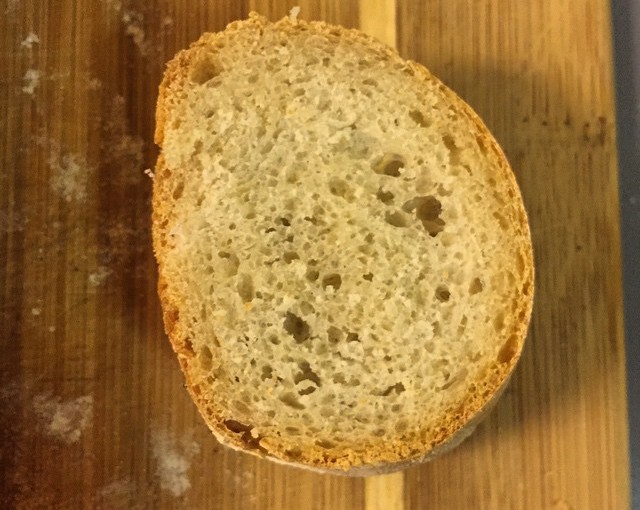Italian Bread vs. French Bread
What’s the difference between Italian Bread and French Bread, you say? That’s a good question. They’re not that different, but the nuts and bolts of it is that Italian bread uses a biga instead of pâte fermentée as a starter, and that Italian bread has just a bit of sugar and fat in it, unlike the bare-bones lean dough of French bread. Those changes mean that Italian bread ends up with a softer crust and a slightly sweeter taste than its Gallic counterpart.
Baking with Biga
When it comes to baking bread, there are many different incarnations of the preferment. The pâte fermentée and the poolish are two I’ve used frequently in the past. Italian bread uses a biga, which is a relatively dry, bland starter. A biga, which is Italian in origin, doesn’t include salt. This means that less yeast is required to make it rise. Frankly, I’m not sure how much the ultimate taste is affected by different
Frankly, I’m not sure how much the ultimate taste is affected by different starters if all other variables are equal. Many of Reinhart’s recipes offer alternate instructions for using different starters for the same bread. Your choice might end up being based on tradition, and how much time you want to spend on a loaf of bread. Dry starters like biga require a bit more hands on time ( kneading), whereas wetter ones like soakers might require only a quick stir.
A New Ingredient (or not): Diastatic Barley Malt Powder
Diastatic barley malt powder is an ingredient recommended by Reinhart as “yeast food.” It essentially accelerates the yeast’s growth and makes the dough have a richer taste and color in the end. Unfortunately, even in San Francisco, where you can find many strange and wonderful ingredients to cook with, I had a hard time finding this particular addition to my baking collection. Next time I’ll plan ahead and buy it online, but this Italian bread recipe bakes up wonderfully without it anyway, so don’t worry if you have a hard time finding it.
The best thing about this Italian bread is its shelf life, especially compared to French bread. The olive oil keeps it soft and tasty for a few days longer than French bread, which is a long time in bread lifecycles, considering that French bread loses its luster in about 24 hours. Italian bread makes a wonderful base for garlic bread, especially after a day or two. When fresh, the long fermenting biga and touch of sugar make this bread amazingly tasty and it needs no adornment.
Italian Bread Recipe
Slightly adapted from Peter Reinhart’s The Bread Baker’s Apprentice. Yields 2 1-lb loaves.
Biga Ingredients
- 2.5 cups (11.25 ounces) unbleached bread flour
- 1/2 tsp instant yeast
- 6-7 ounces room temperature water
Italian Bread Ingredients
- 18 ounces biga
- 2.5 cups (11.25 ounces) unbleached bread flour
- 1 2/3 tsp salt
- 1 tbsp sugar
- 1 tsp instant yeast
- 1 tsp diastatic barley malt powder (optional)
- 1 tbsp olive oil
- 6-8 ounces lukewarm water (90-100°F)
- Semolina flour or cornmeal for dusting
Procedure
- Make the biga: Stir together flour and yeast in a mixing bowl, then add 7 ounces of water and stir until a coarse ball forms. If there is excess flour on the bottom of the bowl, add a little more water. Turn out onto a floured counter and knead for at least 5 minutes, adding flour as needed. The dough should be soft and tacky, but not sticky. The internal temperature should be at least 77°F, but not more than 81°F. Transfer the dough to a lightly oiled bowl and cover with plastic wrap, then let ferment at room temperature for 2-4 hours, or until doubled. After the biga is done rising, degas it by kneading lightly, then return to bowl and refrigerate overnight.
- Remove the biga from the refrigerator to dechill at least an hour before making the dough. Cut it into 8-10 pieces and cover with plastic wrap before letting it come to room temperature.
- Mix the Italian bread dough: Combine the flour, salt, sugar, malt powder (if you’re using it) and yeast together in a large mixing bowl. Add the cut up pieces of biga and knead them in a bit. They won’t integrate into the dough very easily yet, but that’s ok. Add the olive oil and lukewarm water, and mix until the dough forms a rough ball.
- Turn the dough out onto a floured surface and knead for about 10 minutes. The consistency of the dough will be similar to French bread dough, but slightly softer and suppler.
- Shape the dough into a ball and return to a lightly oiled bowl for rising. Let rise for 2 hours at room temperature, or until dough has doubled in size.
- Shape the loaves: Divide the dough into 2 equal pieces, being careful not to degas the dough. Shape them into rough boules. Lightly dust with flour, then cover and let rest for 5 minutes. While the dough is resting, line a baking sheet with parchment and dust with semolina flour. Shape the boules a little more carefully– the outside should be smooth and tight.
- Let boules proof at room temperature for another hour, or until the loaves have swollen to about 1.5x their original size. Preheat the oven to 500°F when the loaves are close to done rising. If you’re using a baking stone, don’t forget to put it and a steam pan (I use a metal pie pan) in the oven when you start preheating.
- Bake the bread: If you’re baking the loaves directly on the sheet pan, simply score the loaves with an X or a square and place the pan in the oven. If you’re using a baking stone, carefully transfer the loaves one at a time to a peel or cutting board that’s well-dusted with semolina. Score the loaf and immediately slide it into the oven. Repeat with the second loaf. Pour a cup of hot water into the steam pan and close the door. After 30 seconds, open the door and spray the walls of the oven with water and close the door. Repeat the spraying process once more after 30 seconds, then lower the oven setting to 450°F. Bake for about 20 minutes, or until loaves are golden brown and sound hollow when tapped from bottom. Rotate loaves (or pan) 180° about halfway through baking to ensure even baking.
- Transfer your Italian bread to a cooling rack and let cool for at least an hour before slicing.

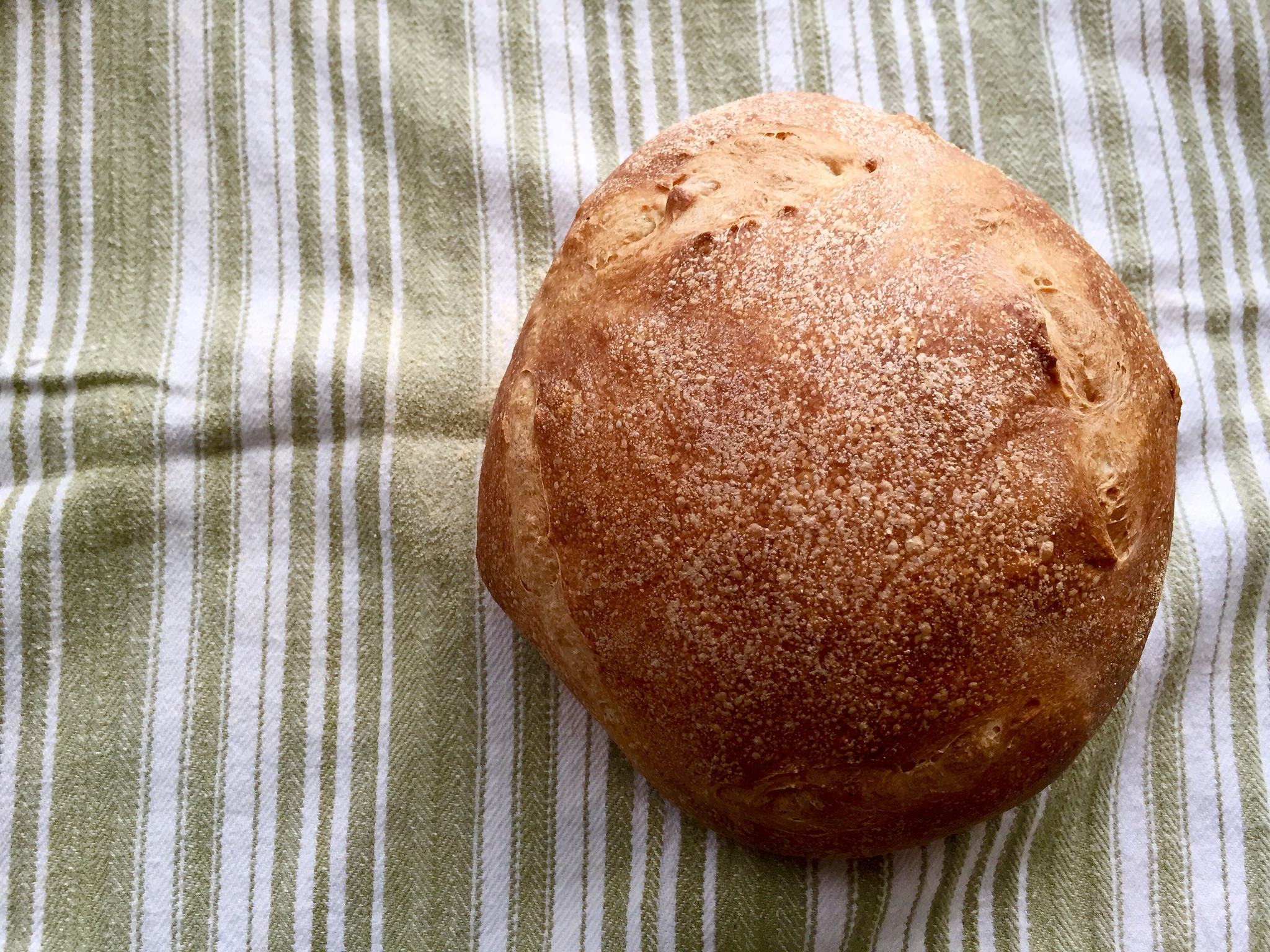


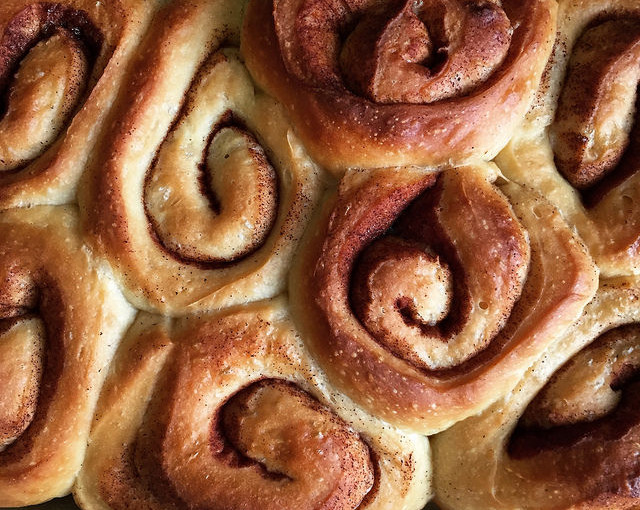
 For a lot of Americans (especially those who make frequent trips through an airport or mall), Cinnabon is the apex of cinnamon roll-goodness. But frankly they tend to be cloyingly sweet, huge, and not consistently fresh. This recipe from The Bread Baker’s Apprentice yields cinnmon buns that are fluffy and balanced, not overly sweet or buttery, and just the right size for breakfast.
For a lot of Americans (especially those who make frequent trips through an airport or mall), Cinnabon is the apex of cinnamon roll-goodness. But frankly they tend to be cloyingly sweet, huge, and not consistently fresh. This recipe from The Bread Baker’s Apprentice yields cinnmon buns that are fluffy and balanced, not overly sweet or buttery, and just the right size for breakfast.

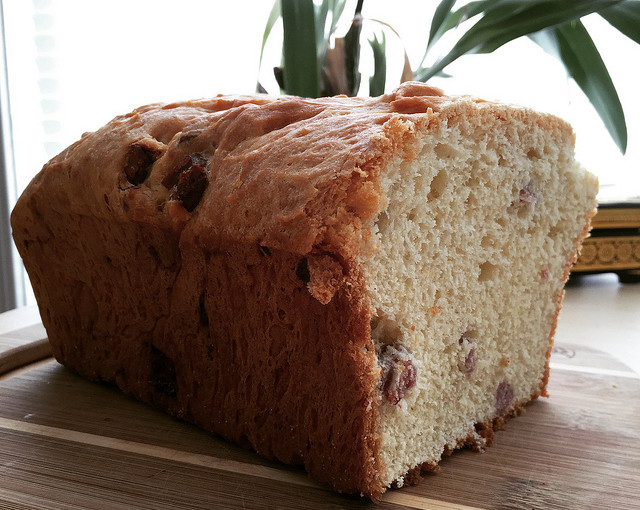




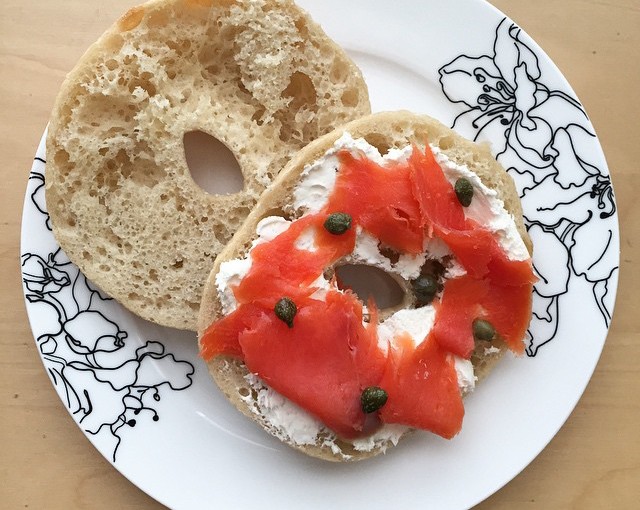


 The idea of intentionally putting dough in water is kind of weird to me. Boiling water seems so violent, and bread dough can be such a delicate substance. In the end, I find it easier to think of bagels as weird giant noodles during the boiling stage. In fact, the method used here actually has a lot in common with another favorite carb of mine: ramen. As with
The idea of intentionally putting dough in water is kind of weird to me. Boiling water seems so violent, and bread dough can be such a delicate substance. In the end, I find it easier to think of bagels as weird giant noodles during the boiling stage. In fact, the method used here actually has a lot in common with another favorite carb of mine: ramen. As with 


